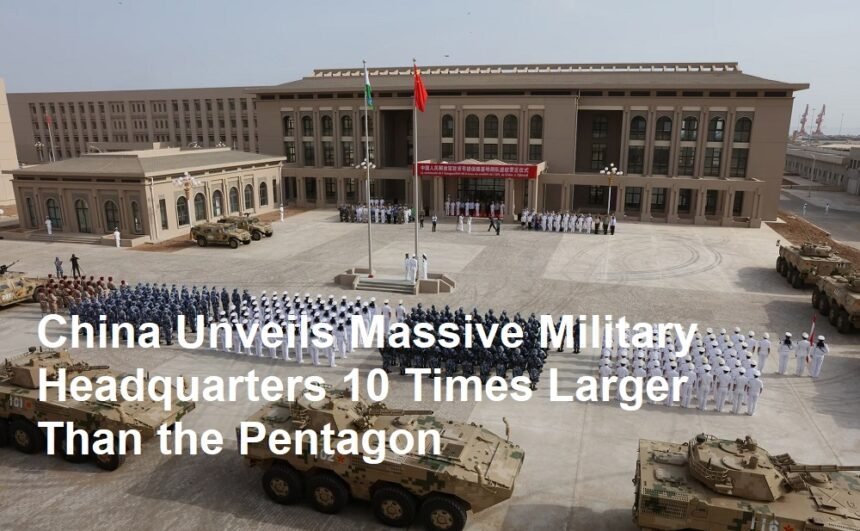In a stunning development that has captured global attention, China has unveiled a state-of-the-art military headquarters reportedly 10 times larger than the United States’ Pentagon. The sprawling complex, built in a remote area of northern China, is part of Beijing’s ambitious modernization drive and is said to house advanced communication systems, operational centers, and strategic command facilities. One of its most intriguing features is a secret underground bunker, designed to operate as a secure command center in the event of a major conflict.
The new facility covers several square kilometers and dwarfs the Pentagon in both size and capability. Its design reflects China’s commitment to enhancing its military resilience and readiness for future challenges. Officials close to the project, who spoke on condition of anonymity, revealed that construction began three years ago as part of a classified initiative. The headquarters integrates cutting-edge technologies, including artificial intelligence, quantum communications, and satellite-based systems, ensuring it remains at the forefront of modern warfare.
At the heart of the facility lies a heavily fortified underground bunker, reportedly constructed several stories below ground level. This bunker is engineered to withstand a nuclear strike and provide uninterrupted command and control, even under extreme conditions. Military experts suggest that this secure enclave could serve as a safe haven for top military and government officials during emergencies, ensuring that strategic decisions can be made without interruption.
“The scale and sophistication of this headquarters are unprecedented,” commented General Li Wei, a retired Chinese military strategist. “The integration of advanced technologies with robust defensive measures clearly signals that China is preparing for a future where rapid response and resilience are critical. This facility is not merely a building; it’s a strategic asset that will enhance our operational capabilities significantly.”
The project’s vast scope and secrecy have led international analysts to view it as a major geopolitical signal. With global tensions on the rise and an increasingly complex security landscape, the new headquarters is expected to play a pivotal role in China’s military strategy. Its capabilities extend beyond national defense; many speculate it will be instrumental in projecting power in regions of strategic interest, potentially altering the balance of power in Asia.
Reactions from the international community have been swift and varied. U.S. and European defense officials have expressed concern over the implications of China’s massive investment in military infrastructure. “This development is significant and merits close observation,” stated an anonymous U.S. defense official. “It indicates that China is not only modernizing its armed forces but also creating a robust command structure capable of functioning under the most challenging circumstances.”
Chinese state media has hailed the new headquarters as a symbol of national strength and technological progress. In a recent broadcast, a spokesperson for the Ministry of National Defense proclaimed, “This facility marks a major milestone in our military modernization efforts. It will enhance our ability to protect national security and respond swiftly to any potential threat.”
The international defense community is now watching closely as analysts work to assess the broader strategic implications of this development. Questions remain about the potential operational roles of the facility and the degree to which it might influence regional military dynamics. With its combination of vast size, advanced technological integration, and the presence of a secret bunker, the headquarters is poised to serve as a cornerstone of China’s military strategy for years to come.
In conclusion, the unveiling of China’s massive military headquarters—ten times the size of the Pentagon, complete with a secret underground bunker—signals a new era in military infrastructure and strategic planning. As global powers recalibrate their defense policies in response to China’s bold move, this development underscores the shifting dynamics of modern warfare and the ongoing race for technological superiority in the international arena.












